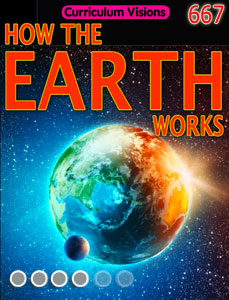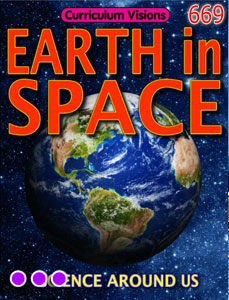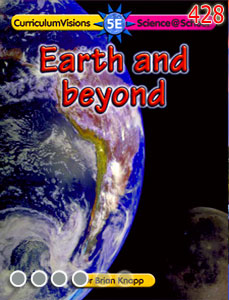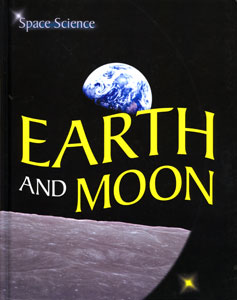The Earth is the fifth largest planet in the Solar System and the third planet from the Sun. It is the only planet in the Solar System on which life can exist, as far as is known.
The Earth is about 149,573,000 kilometres (92,960,000 miles) from the Sun. The Earth orbits the Sun at a speed of about 30 kilometres (19 miles) per second. As a result it orbits the Sun once every 365.25 days. The Earth makes one complete spin on its axis in 23 hours 56 minutes 4 seconds.
The Earth is just over 40,000 kilometres (almost 25,000 miles) around at the equator. The radius of the Earth is 6,371 kilometres (3,960 miles) and its diameter 12,742 kilometres (7,920 miles). The total surface of the Earth is 509,600,000 square kilometres (197,000,000 square miles), 71 per cent of which is water.
How the Earth moves
The angle at which the Earth is tilted relative to the Sun varies. At the present it is 21.5 degrees, but over a period of 40,000 years it can become over 3 degrees larger than this. When the Earth tilts more, there are bigger differences between seasons; when the Earth tilts less, the differences between the seasons are smaller. The Earth also changes its orbit around the Sun in a regular way. At times it is almost circular, but over a period of 97,000 years it changes shape until it follows a path like a giant oval (an ellipse), and then the Earth will be cooler both in summer and winter. These ideas about the Earth's changing movements were used by a scientist named Milankovitch to suggest underlying causes for changes in the Earth's climate and the start of the Ice Ages.
The spinning tide
The Earth and Moon spin round the Sun so fast that, if it were not for the Earth's gravity, the ocean waters would all flow to the side of the Earth which is facing away from the Sun and fly off into space! Although the Earth's gravity holds the ocean waters on the surface, the spinning effect of the Earth is powerful enough to ensure that there is always a high tide on the side of the Earth facing away from the Sun.
The gravity tide
The Moon's gravity pulls the waters of the oceans towards it because it is so close to the Earth. As the Moon orbits the Earth, it therefore causes ocean water (and the high tide) to move across the Earth's surface as well, causing regular periods of high and low tide.
The Sun is so far away that it has less effect than the Moon. Often Sun and Moon pull water in different ways, but when they act together they give a high ranging (spring) tide, and when they oppose they give a low ranging (neap) tide.









